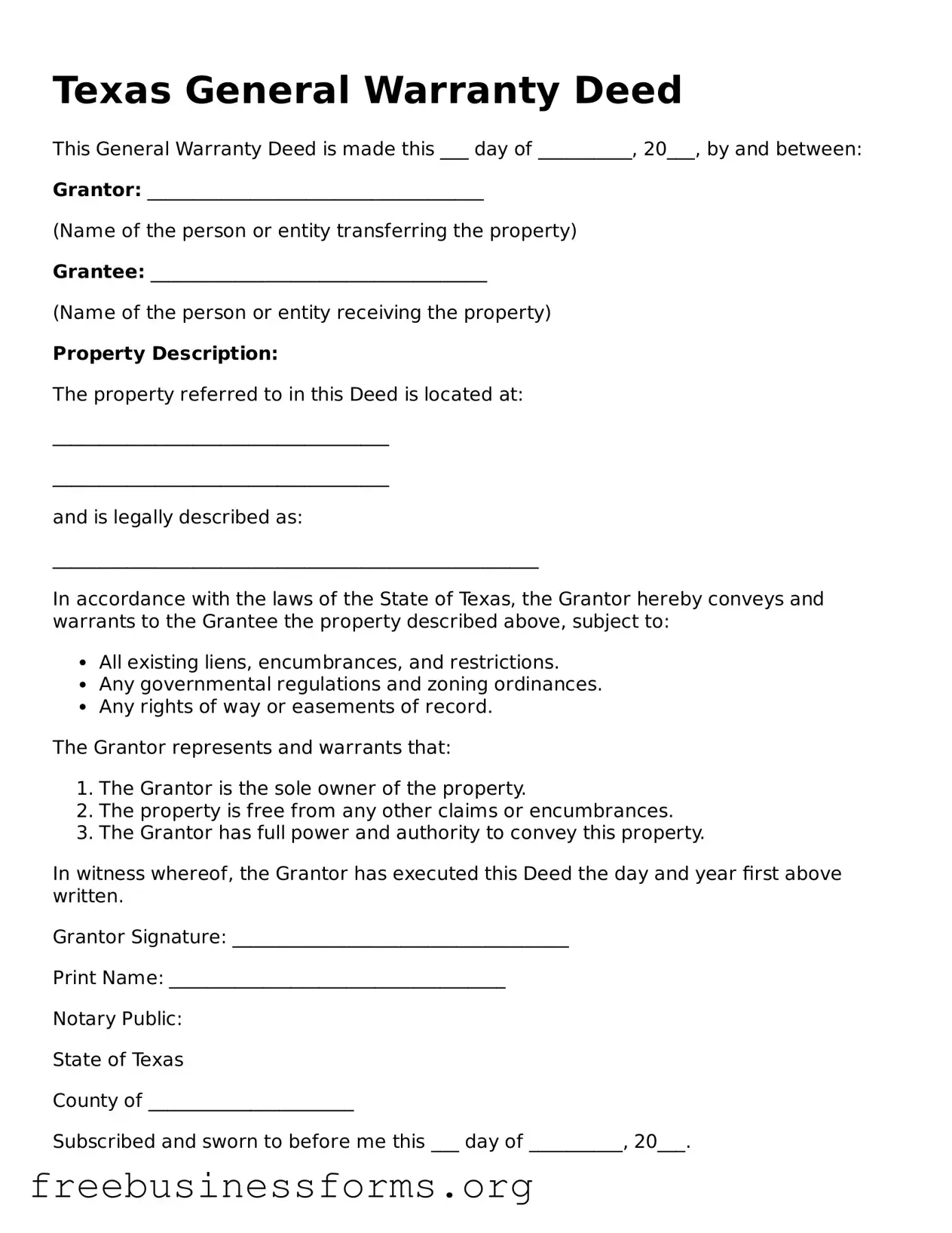Texas General Warranty Deed
This General Warranty Deed is made this ___ day of __________, 20___, by and between:
Grantor: ____________________________________
(Name of the person or entity transferring the property)
Grantee: ____________________________________
(Name of the person or entity receiving the property)
Property Description:
The property referred to in this Deed is located at:
____________________________________
____________________________________
and is legally described as:
____________________________________________________
In accordance with the laws of the State of Texas, the Grantor hereby conveys and warrants to the Grantee the property described above, subject to:
- All existing liens, encumbrances, and restrictions.
- Any governmental regulations and zoning ordinances.
- Any rights of way or easements of record.
The Grantor represents and warrants that:
- The Grantor is the sole owner of the property.
- The property is free from any other claims or encumbrances.
- The Grantor has full power and authority to convey this property.
In witness whereof, the Grantor has executed this Deed the day and year first above written.
Grantor Signature: ____________________________________
Print Name: ____________________________________
Notary Public:
State of Texas
County of ______________________
Subscribed and sworn to before me this ___ day of __________, 20___.
Notary Signature: ____________________________________
My Commission Expires: ______________________
